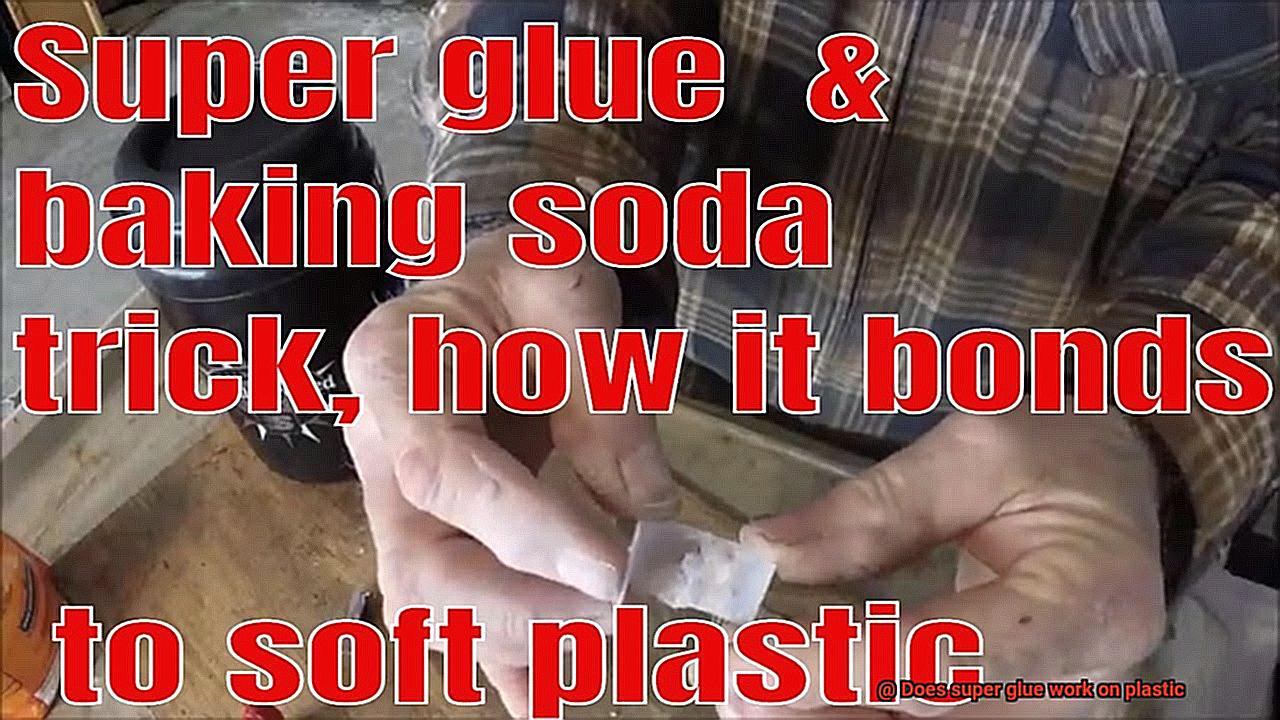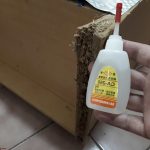Welcome to our blog, where we’re about to unravel the mysteries of a question that has boggled the minds of DIY enthusiasts and crafters everywhere: Does super glue work on plastic?
If you’ve ever found yourself in a sticky situation (pun totally intended.) while trying to mend or create something with plastic, you’ve come to the right place.
Plastic is a material that pops up in countless applications, from everyday household items to intricate models, and finding the perfect adhesive can be a real head-scratcher. In this blog post, we’re diving deep into the world of super glue and its compatibility with different types of plastic.
So, whether you’re a hobbyist, project enthusiast, or just plain curious about the science of adhesives, stick around as we uncover the truth behind this sticky affair.
What is Super Glue?
Contents
In a world where plastic reigns supreme, finding the perfect adhesive to bond this versatile material can be a challenge. Enter Super Glue, the superhero of adhesives. Also known as cyanoacrylate adhesive, Super Glue has the magical ability to create strong bonds in seconds, making it an essential tool for various plastic applications.
What is Super Glue?
Super Glue is more than just an ordinary adhesive; it’s a fast-acting marvel that contains cyanoacrylate, an acrylic resin that possesses extraordinary bonding powers. When exposed to moisture, this resin undergoes a chemical reaction that causes it to polymerize and create a durable bond. It’s like witnessing a superhero harness their incredible strength in the blink of an eye. But what sets Super Glue apart from other adhesives is its remarkable ability to stick to a wide range of surfaces, including metals, ceramics, wood, and, most importantly, plastic. It’s as if Super Glue has been bestowed with the power to unite even the most incompatible materials.
Compatibility with Plastic:
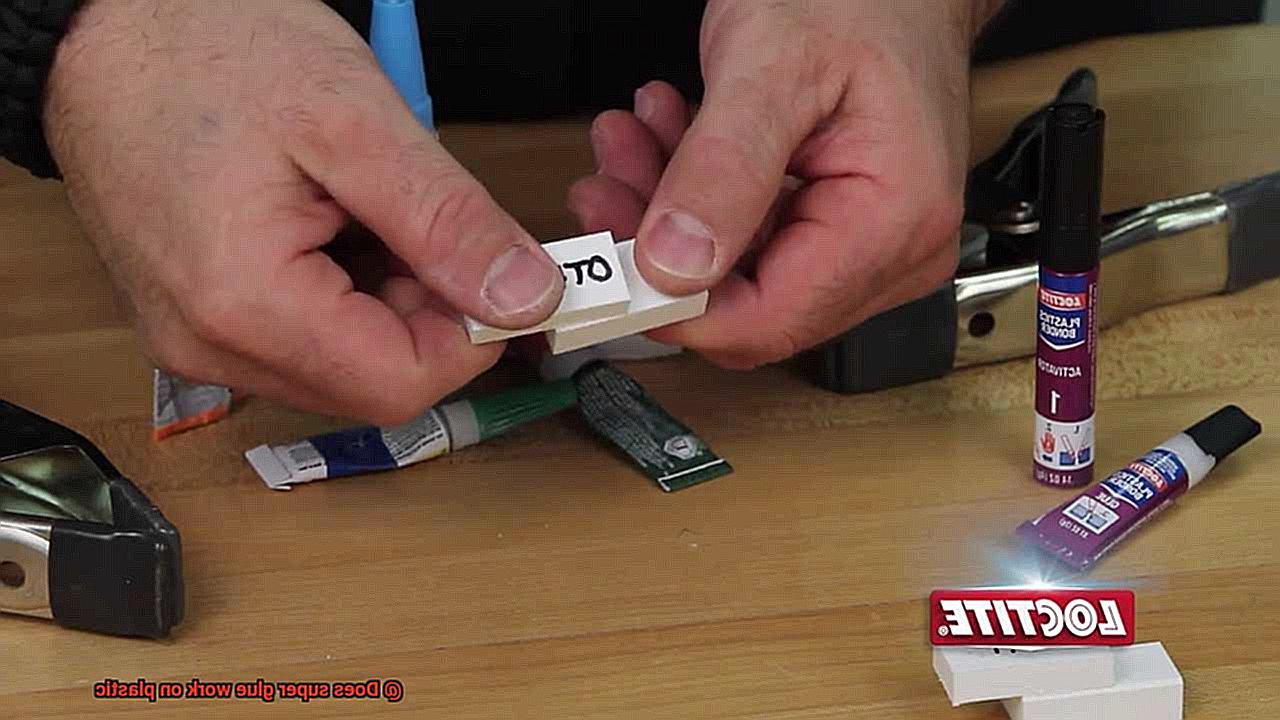
Not all plastics are created equal when it comes to bonding with Super Glue. Some plastics, like polyethylene and polypropylene, possess a low surface energy that hinders adhesion.
The world of Super Glue has evolved to meet this challenge head-on. Enter specialized formulations designed specifically for bonding these tricky plastics. These variants contain additives that enhance adhesion and make them the perfect companion for your plastic projects.
With these special formulations, even the most stubborn plastics will succumb to the irresistible bonding prowess of Super Glue.
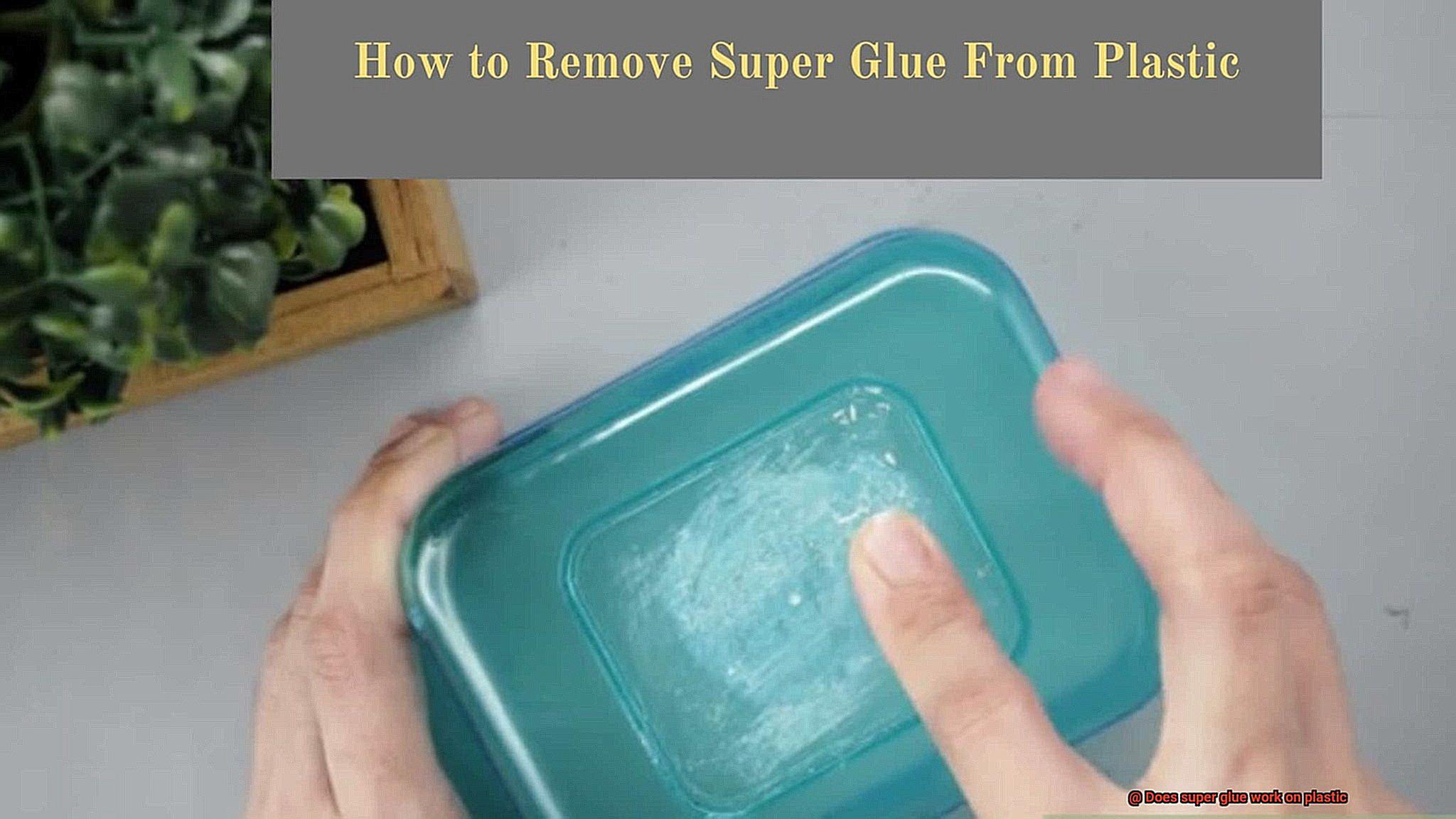
Preparing the Surfaces:
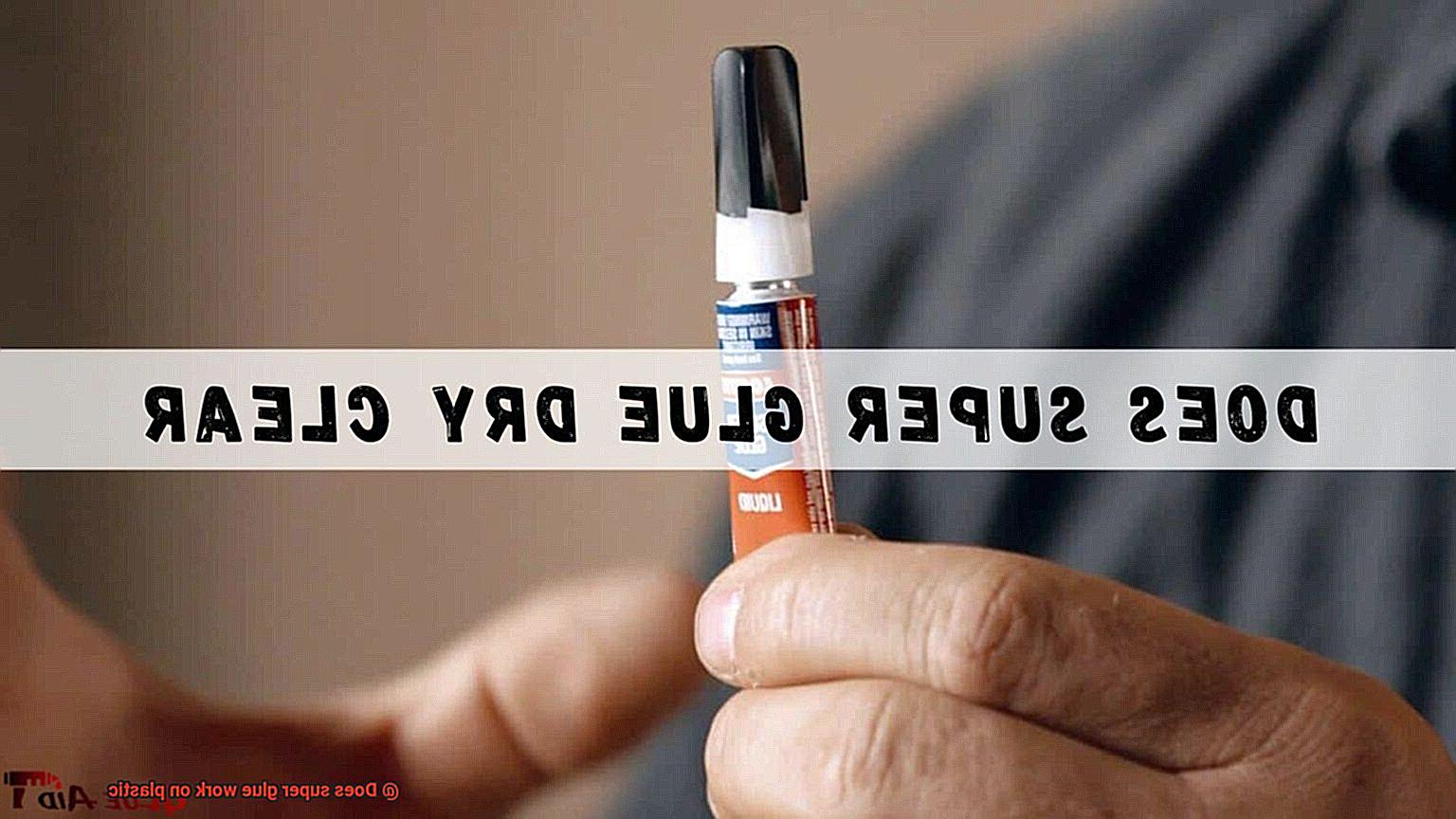
To ensure a successful bond between Super Glue and plastic surfaces, proper preparation is key. Think of it as preparing for battle – you need to arm yourself with the right tools and strategy.
Start by cleaning the surfaces with a suitable solvent or detergent to remove any dirt or grease that might hinder adhesion. You want a pristine surface, ready to embrace the power of Super Glue.
For an extra boost, lightly roughen the surface with sandpaper or a file to create a texture that enhances bonding. It’s like sharpening your sword before going into battle – you want every advantage possible.
Using Super Glue on Plastic:
When it comes time to wield the power of Super Glue on plastic surfaces, remember that less is more. Apply a thin layer of adhesive evenly onto one surface and press the two surfaces together firmly.
Feel the satisfying resistance as they merge into one, knowing that a strong bond is being forged before your eyes. Hold them in place for the recommended curing time specified by the manufacturer.
This can range from minutes to hours depending on the specific type of Super Glue used. Patience is key here – allow the bond to solidify and grow stronger with each passing second.
Types of Plastic
Plastic is a versatile material that has become an integral part of our everyday lives. From packaging materials to household items, plastic is everywhere. But when it comes to bonding plastic with super glue, not all types are created equal. In this article, we will explore the different types of plastic and their compatibility with super glue.
- Polyethylene (PE): Polyethylene is a common type of plastic used in packaging materials, plastic bags, and bottles. Unfortunately, super glue does not bond well with polyethylene due to its low surface energy. The adhesive tends to bead up on the surface instead of creating a strong bond. However, there are specialized super glues available that are formulated to bond with low-energy plastics like polyethylene.
- Polypropylene (PP): Another widely used plastic, polypropylene is found in products such as food containers, automotive parts, and textiles. Like polyethylene, super glue does not typically adhere well to polypropylene due to its low surface energy. However, there are specific super glues available that are designed to bond effectively with polypropylene.
- Polyvinyl Chloride (PVC): PVC is a versatile plastic used in various applications, including pipes, cables, and vinyl flooring. Super glue can form a decent bond with PVC, but it may not be as strong as with other plastics. It is recommended to roughen the surface of PVC before applying super glue for better adhesion.
- Acrylic: Acrylic, also known as Plexiglas or Perspex, is a transparent plastic commonly used in signage, displays, and even aquariums. Super glue bonds exceptionally well with acrylic due to its smooth surface and high surface energy. It forms a strong and durable bond.
- Polystyrene (PS): Polystyrene is often used in disposable cutlery, CD cases, and insulation materials. Super glue forms a strong bond with polystyrene, making it an effective adhesive for these applications. However, it is important to note that some super glues may cause polystyrene to melt or dissolve, so it is advisable to use a specialized adhesive formulated for bonding polystyrene.
In addition to the types of plastic, surface preparation is crucial for achieving a strong bond between super glue and plastic. Before applying the adhesive, it is important to clean the plastic surface thoroughly with alcohol or a mild detergent.
This removes any dirt, oil, or contaminants that may hinder adhesion.
Additionally, roughening the surface with sandpaper can create a rough texture that provides more area for the adhesive to grab onto, resulting in a stronger bond.
Is Super Glue Compatible with Plastic?
If you’ve ever worked on a project involving plastic, you know the frustration of things not sticking together as planned. That’s where super glue, also known as cyanoacrylate adhesive, comes to the rescue. But before you dive in and start bonding everything in sight, it’s essential to test if super glue is compatible with the specific type of plastic you’re working with.
Why is testing important? Well, not all plastics are created equal when it comes to adhesion. Some plastics have a low surface energy that makes it difficult for super glue to bond effectively. Imagine spending hours on a project only to have it fall apart because the wrong adhesive was used – talk about a disappointment.
To avoid such mishaps, here’s what you need to do. Take a small piece of the plastic you’ll be using and apply a small amount of super glue to an inconspicuous area. Let it dry for 24 hours, then check the bond strength and durability. If the bond is strong and the plastic remains intact, congratulations. Super glue is compatible with that particular plastic.
On the other hand, if the bond is weak or the plastic becomes brittle or discolored, it’s an indication that super glue is not suitable for that type of plastic. In cases like these, it’s best to explore other adhesive options specifically designed for plastics.
Now, let’s talk about the potential risks and benefits of using super glue on different types of plastic.
Benefits:
- Super glue works well on rigid plastics such as polycarbonate, ABS, acrylic, and PVC. These plastics have a higher surface energy that allows for better adhesion.
- It forms a strong and durable bond when used correctly.
- Super glue is easy to use and dries quickly.
Risks:
- Some plastics, like polyethylene and polypropylene, have a low surface energy that prevents effective adhesion with super glue.
- The bond strength may vary depending on the type of plastic, so it’s crucial to test before committing to a larger project.
- Super glue can bond skin quickly, so it’s important to take safety precautions and work in a well-ventilated area.
To maximize the effectiveness of super glue on plastic, it’s important to clean the surface thoroughly before application. Any dirt, oils, or residue can interfere with the bonding process. Use a mild detergent or alcohol to clean the surface and ensure optimal adhesion. Additionally, for smooth or non-porous plastics, roughening the surface slightly with sandpaper can enhance adhesion.
Preparing the Surface for Bonding
Preparing the surface for bonding is a critical step when it comes to using super glue on plastic. It sets the stage for a strong and durable bond that will withstand the test of time. Here are some key points to consider:
- Cleanliness is key: Don’t let dirt and grime spoil your bonding party. Before applying super glue, make sure to thoroughly clean the plastic surface. Grab some mild detergent or soapy water, and give it a good scrub. Say goodbye to any dirt, dust, or grease that could sabotage your bond.
- Bid adieu to residue: Don’t let sticky leftovers ruin your fresh bond. Use an adhesive remover or rubbing alcohol to wipe away any remnants of previous adhesive adventures. Be a superhero on a mission and ensure a clean slate for your new bond.
- Embrace roughness: Smooth surfaces are no match for super glue. Roughen up that plastic surface to give it some texture and grip. A little sandpaper action or a swipe of a deglossing product will do the trick. Just be gentle, like caressing a delicate flower, and avoid scratching the plastic.
- Prime for perfection: Take your bond to the next level by priming the surface. Think of it as giving your glue and plastic a love potion that enhances their chemistry. Follow the instructions on the primer bottle because we all know magic potions are no joke.
- Less is more: Don’t drown your project in adhesive, my friend. A thin layer of super glue is all you need. Apply it evenly onto one of the surfaces being bonded, then press those surfaces together firmly but gently. Voila. You’ve created a bond that can conquer even the toughest challenges.
- Different plastics, different needs: Just like people, different plastics have different personalities when it comes to bonding. Some can be stubborn like that friend who never answers their texts. If you’re dealing with polyethylene or polypropylene, consider using a specialized adhesive designed just for them. Show them some extra love and attention.
Applying Super Glue to Plastic
This powerful adhesive, also known as cyanoacrylate adhesive, can work wonders when it comes to bonding plastic materials. But before you take the plunge into the world of DIY repairs, let’s walk through the proper steps for applying super glue to plastic, ensuring a bond that is strong and durable.
First things first, cleanliness is key. To achieve the best bonding strength, start by thoroughly cleaning the plastic surface. Wipe away any dust, grease, or moisture that may hinder the adhesive’s effectiveness. A splash of rubbing alcohol or a mild detergent will leave you with a pristine canvas for your glue to work its magic.
Next up, roughen up the surface. Smooth plastic surfaces can be a tricky challenge for super glue to conquer. To overcome this hurdle, lightly roughen up the surface using sandpaper or a file. This simple step creates tiny grooves that enhance the mechanical bond between the glue and the plastic, ensuring a steadfast connection.
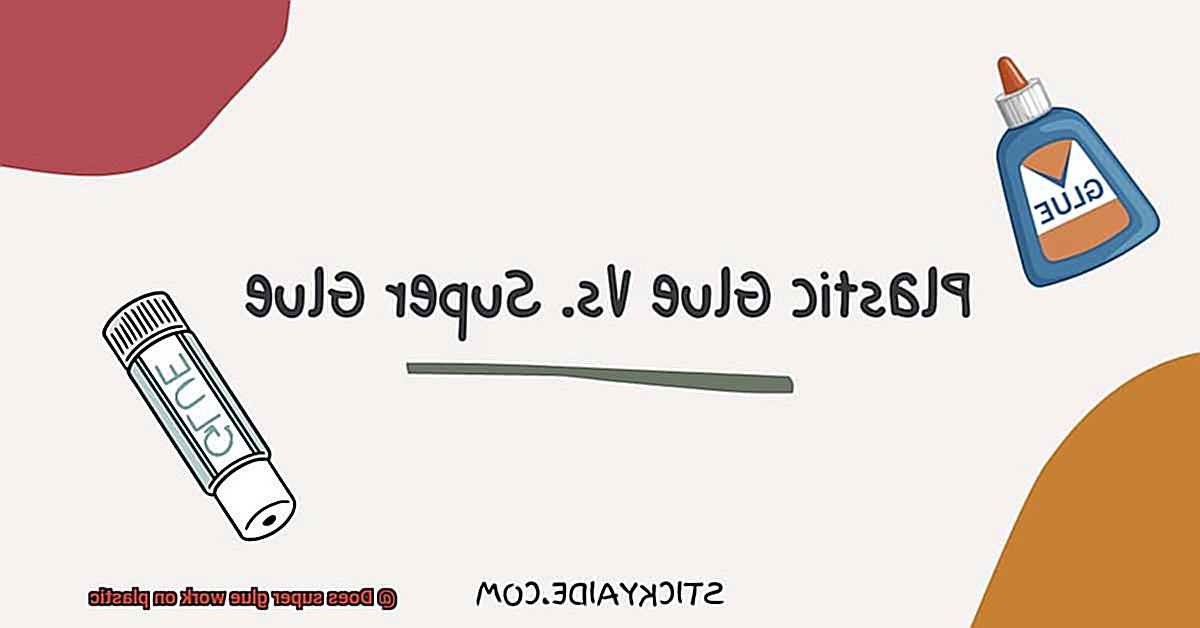
Now it’s time to apply the super glue, but remember: less is more. Apply a small drop or thin line of glue along the intended bonding area. It’s important not to go overboard with the glue as excessive amounts can result in unpleasant squeeze-out and weaken the bond you’re striving for.
Once you’ve applied the glue, it’s time to press firmly. Bring the glued surfaces together and exert some pressure. This ensures maximum contact between the two surfaces and helps create a bond that can withstand the test of time. Hold them together for a few minutes until the glue sets. Keep in mind that certain types of plastics may require longer curing times, so always refer to the manufacturer’s instructions for specific guidance.
It’s crucial to consider plastic compatibility when working with super glue. While it works wonders on many plastics, there are certain types with low surface energy, such as polyethylene or polypropylene, that may require specialized adhesives designed specifically for their bonding needs. Don’t fret though, there’s a solution for every plastic out there.
Lastly, handle with care. Super glue lives up to its “super” reputation by bonding quickly to skin and other surfaces. Make sure to wear protective gloves and work in a well-ventilated area. Accidents happen, so be prepared and take necessary precautions.
Curing and Reinforcement
In the world of adhesives, super glue stands as an unsung hero, possessing the power to bond plastic surfaces with ease. But like any superhero, it requires the right techniques and tools to ensure a strong and long-lasting bond.
Join us as we delve into the realm of super glue, exploring the techniques used to reinforce the bond between plastic surfaces. So, don your capes and let’s embark on this adhesive adventure.
Technique 1: Cleanliness is Key:
Before applying super glue, cleanliness is paramount. Any trace of grease or dust can hinder the bonding process and weaken the bond. Utilize mild detergent or rubbing alcohol to thoroughly cleanse the plastic surfaces, creating a pristine canvas for the glue to work its magic.
Technique 2: Curing Time:
Patience becomes a virtue when working with super glue. Although initial bonding occurs within seconds, complete curing may take several hours or even up to 24 hours in certain cases. Allowing ample time for the glue to fully cure before subjecting the bonded plastic to stress or load is essential. Remember, good things come to those who wait.
Technique 3: Layer Up:
To reinforce the bond, consider applying multiple layers of super glue. By adding extra layers, you expand the surface area of contact between the plastic pieces, resulting in a stronger bond. Ensure each layer is fully cured before applying the next one, building up strength step by step.
Technique 4: Fillers and Reinforcements:
For an additional boost of strength, consider incorporating fillers or reinforcements alongside super glue. These fillers can take the form of powders, fibers, or even small pieces of plastic. When mixed with the glue, they create a thicker adhesive that not only fills gaps but also provides extra reinforcement to the bond. Baking soda, talcum powder, and fiberglass strands are commonly used fillers that work wonders.
Technique 5: Specialized Super Glue:
Not all super glues are created equal. Specific types of super glue are formulated for plastic bonding, boasting enhanced adhesion to plastic surfaces. These glues contain additives or modifiers designed to improve compatibility between the glue and plastic, resulting in superior bond strength. Seek out these specialized adhesives to ensure a stronger and more durable bond.
Strength of Bond on Different Plastics
Today, we are going to explore the strength of bond on different plastics when using the beloved adhesive, super glue. So, grab your lab coat and let’s dive into the science behind this magical bonding process.
Plastics come in all shapes and sizes, each with its own unique chemical composition and surface properties. These factors greatly influence how well they bond with super glue. Some plastics are super glue’s best buddies, while others require a little extra effort to form a strong bond.
Let’s start with the challenging ones – polyethylene (PE) and polypropylene (PP). These plastics have low surface energy, making them a bit tricky to bond. However, fear not. With the help of a primer specially designed for low-energy surfaces, you can give super glue a power-up and significantly boost the bond strength on these plastics.
On the other hand, acrylic plastics, such as Plexiglas or Perspex, are super glue’s BFFs. With their smooth surface and moderate surface energy, they effortlessly form a strong bond. Polycarbonate (PC) and polystyrene (PS) are also in the same league, boasting good surface energy and great compatibility with super glue.
But here’s the catch: the strength of the bond can vary depending on several factors. Factors like plastic type, surface preparation, and application technique can all impact the bond strength. To ensure a successful bonding experience, always remember to thoroughly clean the plastic surfaces before applying super glue. No dust bunnies allowed.
To further enhance the bond strength, apply a thin layer of super glue and give it enough time to cure properly. This will create a robust bond between the plastic surfaces and prevent any unexpected surprises down the road.
However, don’t just take our word for it. Test the strength of the bond on a small, inconspicuous area first. This will allow you to fine-tune your technique and ensure that your plastic parts are securely fastened.
It’s important to note that while super glue is a superhero adhesive, its effectiveness can vary depending on the specific type of plastic and the conditions in which it is used. Additionally, it’s crucial to consider the potential environmental impacts associated with the use and disposal of plastics and adhesives.
Safety Tips When Using Super Glue on Plastic
When it comes to bonding plastic materials, super glue is a go-to adhesive. However, it’s vital to prioritize safety while working with this powerful adhesive. In this article, we will explore essential safety tips to keep in mind when using super glue on plastic.
Ventilation: Breathe Easy.
To avoid inhaling any potentially irritating fumes, always work in a well-ventilated area. Open windows or use a fan to circulate fresh air, ensuring your eyes, nose, and throat remain comfortable and irritation-free.
Protective Gear: Guard Your Hands.
Donning protective gloves is a smart move to shield your skin from accidental spills or contact with super glue. Remember, this adhesive bonds instantly, so protect those precious hands.
Eye Protection: Shield Your Vision.
Safeguard your eyes from any splashes or drips of super glue by wearing safety goggles or glasses. In case of accidental eye contact, immediately flush your eyes with water for at least 15 minutes and seek prompt medical attention.
Surface Preparation: Clean and Dry.
Before applying super glue, ensure the plastic surface is squeaky clean and free from dirt, oil, or grease. Optimal adhesion and a stronger bond can be achieved by cleaning the surface with rubbing alcohol or a mild detergent.
Adhesive Application: Less is More.
When it comes to applying super glue, remember that less is more. Using small, controlled amounts ensures precise application and minimizes the chances of messy spills or accidental contact with skin or other surfaces.
Skin Contact: Relax and Soak.
In the unfortunate event of super glue coming into contact with your skin, resist the urge to panic. Instead, soak the affected area in warm soapy water and gently attempt to separate the bonded surfaces using a blunt object. Avoid pulling or tugging, as this can cause further damage.
8a4dcQFHGDI” >
Also Read: Does Gorilla Glue Work on Plastic?
Conclusion
Super glue is indeed effective when it comes to bonding plastic materials together. It forms a strong and durable bond that can withstand various stresses and strains. Whether you’re repairing a broken toy, fixing a cracked phone case, or assembling DIY projects, super glue can be your go-to adhesive for plastic surfaces.
With its fast-drying nature, super glue quickly forms a tight seal between the plastic pieces, ensuring a secure and long-lasting bond. Its powerful adhesive properties make it suitable for different types of plastics, including ABS, PVC, acrylic, and more.
Not only does super glue provide excellent adhesion on plastic surfaces, but it also offers versatility in terms of application. Whether you prefer using liquid super glue or gel-based formulas, both options work effectively on plastic materials.
When using super glue on plastic, it’s important to ensure that the surfaces are clean and free from any dirt or grease. This will help maximize the adhesive strength and ensure a successful bond. Additionally, applying the glue sparingly and evenly will prevent excess glue from seeping out and creating messy residue.
In conclusion, if you’re wondering whether super glue works on plastic, the answer is a resounding yes. Its strong bonding capabilities and compatibility with various types of plastics make it an ideal choice for all your plastic repair needs.

